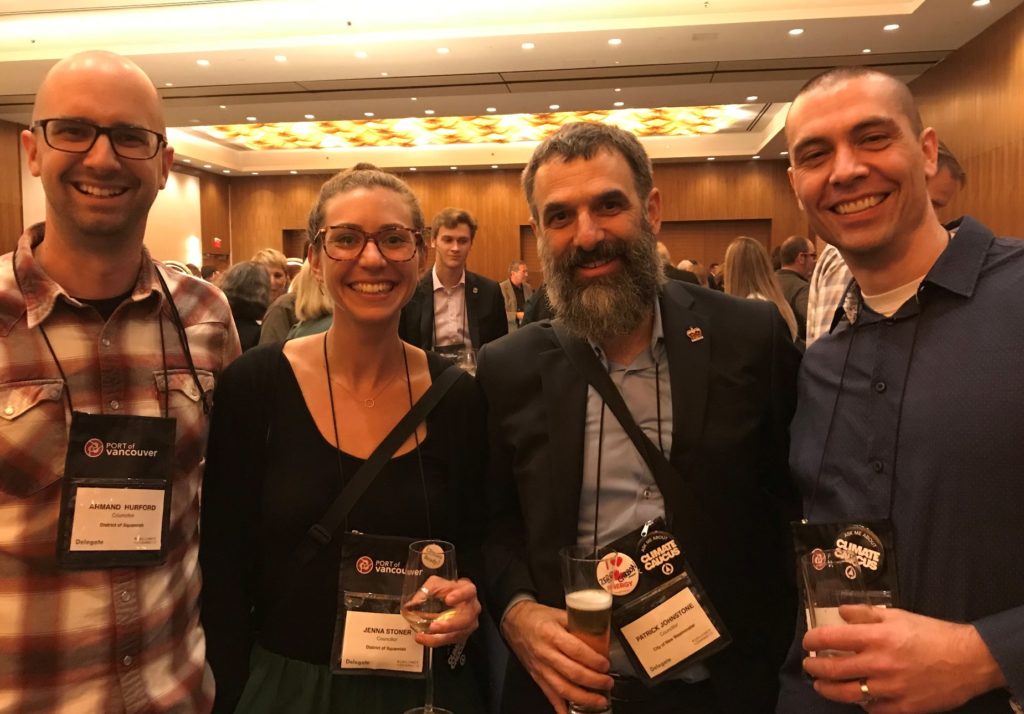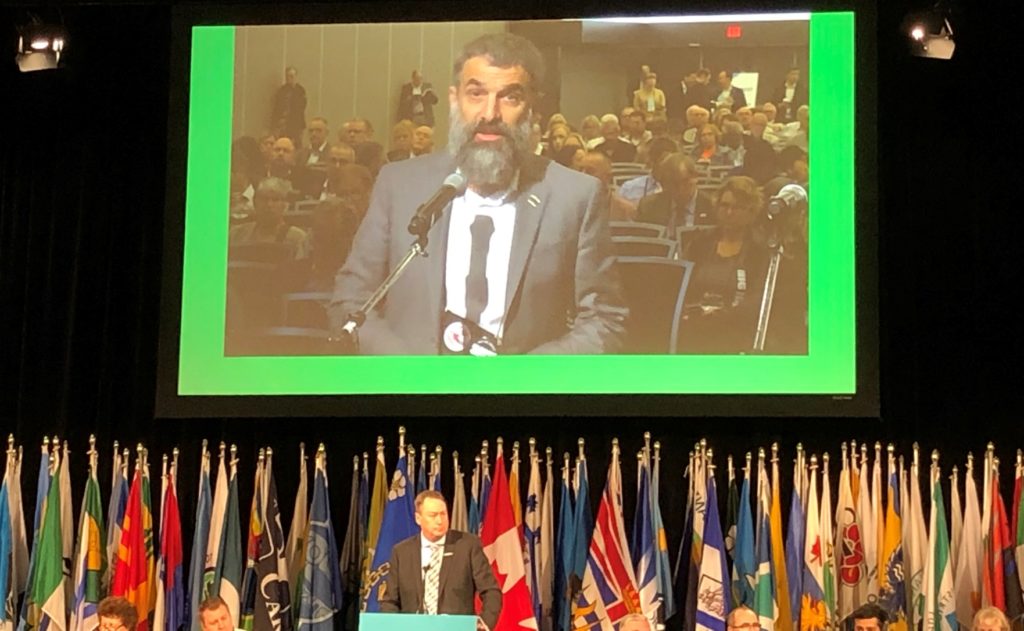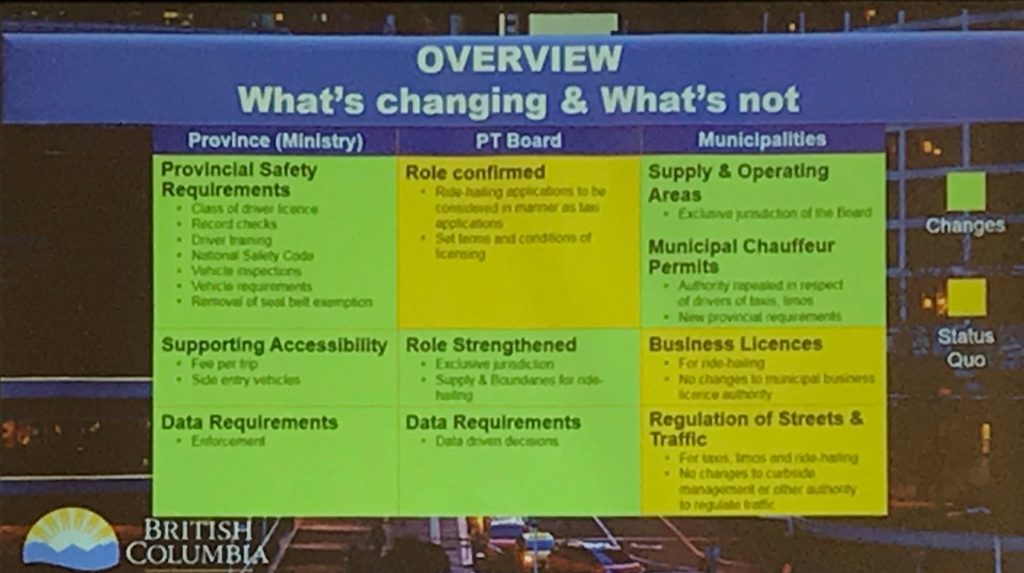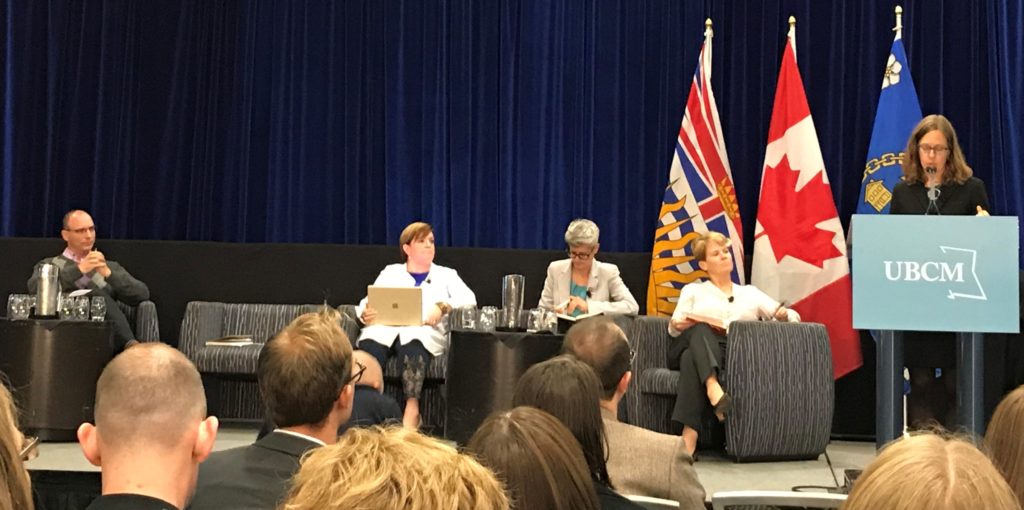Our last Council meeting of 2019 included and afternoon workshop where staff presented some framework ideas on a new Inclusionary Housing policy – you housing and policy wonks might want to catch the video and see what the City is dreaming up! That will all come to regular council as the program is put together, so I’m sticking to regular Council business here. Our evening Agenda started with two presentations:
Theatre Strategy for approval
The City owns two performing arts theatres, and will own three in the near future when the Massey Theatre is exchanged to the City from the School District as the new High School is built. With a total of 1761 city-owned theatre seats and three stages, this is a pretty significant investment for a City of 72,000 people. Making the most of this asset, and the important relationships we have with non-profit operators of these theatres, is the goal of this strategy.
The big goal is to have a thriving theatre scene, from students learning the performing arts to dedicated local amateurs, regional professional productions and major touring acts (I still can’t believe I saw Nick Cave in New Westminster!), assure that our non-profit partners have the tools they need to remain financially solvent, and assure the theater assets are maintained. There are a myriad of cultural benefits and business spin-off from this, and I’m glad to see council support the strategy.
Queen’s Park Sportsplex Update
At long last, the Sportsplex is being built. This has been a long journey – much longer than most would want. We had some delays getting the insurance claim worked out, we bounced around the idea of a temporary building, and expanded gym space at the NWACC caused us to re-evaluate some of the programming needs, then we had a failed procurement for our first version of the replacement. But at long last we have a solid plan for a modern, high efficiency, uber-accessible multi-purpose building, and the beams are being installed as you read this. It will be ready to open in the spring to finally give those activities that have been displaced a stable home.
The following items were moved by Council On Consent:
New Guidelines for Residents’ Associations
As part of our ongoing efforts to improve community engagement and make our Committee and Council Advisory systems work better, we are making a new commitment to our 12 Residents Associations at the same time as we are disbanding the existing RA forum. Instead, we are assigning each RA a Council Liaison, which will change every two years (I was assigned to Glenbrooke North and Queensborough for the first 2-year term). The role of Liaison is not rigidly defined, and I will be reaching out to “my” two RAs early in the New Year to see how they want this new relationship to work. We will also have an annual RA forum with all of Council, where Council meets with representatives of the 12 RAs. Finally, the City will continue to provide a very modest $200 operating grant to any RA who asks for it, to help with minor administrative costs like maintaining a website or creating leaflets.
705 Queen’s Avenue: Proposed Temporary Use Permit – Results of Applicant Led Consultation
Westminster House wants to expand their operations in the Brow of the Hill to provide more supportive housing for women. They had an open house that was widely advertised and poorly attended, with the only attendees showing support of the project. The Brow of the Hill RA also expressed support. This report is only on the results of that consultation and informs the ongoing Temporary Use Permit application, which came to an Opportunity to be Heard later in the meeting (see below).
Queen’s Park Heritage Conservation Area: Zoning Amendment Bylaw to Rezone Three Non-Conforming Properties to Duplex Districts (RT-1)- Bylaw for Two Readings
For reasons unknown (but ripe with inference and allegations of how Council operated in the 1980s), three duplex houses in Queens Park were re-zoned to single family in 1987. They all have duplexes on them now, and through the Queens Park Heritage Conservation Area work, this mis-zoning was identified. The owners of these houses are supportive of the City changing the zoning back to the appropriate category for these three properties only. It is still a Rezoning, which will require a Public Hearing, so I will hold further comment until then.
312 Fifth Street: Bylaw No. 8171, 2019 to Rescind Heritage Revitalization Agreement Bylaw No. 7979, 2018 and Heritage Designation Bylaw No. 7980, 2018 – Bylaw For Three Readings and Consideration of Notice of Opportunity to be Heard for Development Variance Permit
There was a Heritage Revitalization Agreement on a property in Queens Park, where the homeowner promised the City to restore and preserve a heritage house in exchange for some variances and extra zoning entitlement to build a larger-than-normal laneway house. Subsequently, the work done on the heritage house broke that agreement, and has resulted in the heritage benefits of the project being lost to the community. So the City is taking away the entitlements granted.
A the same time, there was some work done as part of that HRA that is now difficult to undo, so we need to go through a Variance process to allow the porch on the house that is already mostly built to remain. That requires an Opportunity to be Heard, which seems a strange waste of everybody’s time, but such is the law.
97 Braid Street: Extension of Temporary Use Permit for the Royal Columbian Hospital Temporary Off-Site Parking Lot
That big parking lot by Braid Station is to support the work happening at RCH (there are shuttles that run between the two). It is there on a Temporary Use Permit, as the Sapperton Green development works its way through design and approvals. The TUP needs to be extended for another three years.
Development Review Streamlining: Proposed Improvements in Support of Reallocating Resources to Council Priorities
We are updating some of the processes in our Planning department to make things work more efficiently, better manage employee workload, and hopefully provide better customer service. This is kind of an omnibus report outlining various changes:
Completed and Proposed Improvements to Development Review
Process and Regulations This would allow staff to amalgamate reports when there are two different application types on one project, e.g.: an affordable housing project that need a rezoning and a housing agreement; reduce the review steps for small projects of less than 5 units; remove the neighbourhood consultation step from laneway house projects where the project meets zoning regulations; and simplify secondary suite requirements while maintaining life/safety standards)
Sign Permit Application Improvements: Sign Bylaw Amendment Bylaw
No. 8132, 2019 – for Three Readings This would update our sign bylaw to reduce the number of variance applications required.
Official Community Plan Update and Development Permit Process Improvements: Official Community Plan Amendment Bylaw No. 8151, 2019, Development Approval Procedures Amendment Bylaw No. 8152, 2019, and Development Services Fees and Rates Amendment Bylaw No. 8153, 2019 – For Consideration of Readings This would update our OCP to introduce some of the streamlining effects, including delegating some Council powers to the Director of Development Services; change the Land use Designation (not the zoning) of 4 properties that are not operating as currently designated; align some of the language between the OCP, and the Queensborough Community Plan; and update some planning and development permit fees.
Brewery District (Wesgroup Project): Request for Construction Noise Bylaw Exemption
We need to change how we do this. We have 90,000 vehicles a day streaming through the Brunette Ave corridor. Any reduction in lane capacity will, according to staff, grind the entire region to a halt and compromise the safety of untold workers and residents. So when road works have to happen (and they do), we need to do it at night. Then I hear form angry residents because someone is operating a backhoe in front of their house at 2am, and they need to sleep. So what to do?
Currently we grant that exception, let them work at night, because keeping traffic flowing is more important that people getting sleep. I still don’t believe that reflects our values as a community, and believe that traffic flowing is just as dangerous and disruptive to my community and traffic constricted. I content more people are injured and killed by free flowing traffic than speed-constricted traffic, but I appear to be the only person who feels this way.
The proponent here says they are going to take great effort to work quietly, the Hospital and others are concerned about traffic impacts, and the last phase of night work in this area did not result in complaints. And at some point when our engineering staff suggest to you serious safety concerns, you have to listen. Council voted (on consent) to give the variance.
Budget Process: Capital Program aligned by Council’s Strategic Priorities
This bundle of reports and tables provides some of the background data staff will use to lead the public conversations about our Capital Budget that is ongoing now. This compliments the data we got last meeting, and the Climate action budget priority info provided below. If you have feedback to Council about the Capital Budget (and I know you do!) you will be able to go to an open house and/or fill out an online survey you can find here.
Mayor’s Transportation Task Force: Royal Columbia Hospital Redevelopment – Parking Requirements and Pedestrian Connectivity to Sapperton Skytrain Station
We are working with Fraser Health on the RCH rezoning, and the Mayors Transportation Task force has put forward some strong recommendations on how to address some of the City’s transportation and climate change priorities in the new buildings. The first design has not seemed to hit the mark (from a City perspective) on accessibility or designed-in active transportation features. So we sent some suggestions to Fraser Health. I maybe would have pointed out that getting people out of cars is a public health intervention, but maybe that is a bit too on-nose.
The following items were Removed from Consent for discussion:
Capital Budget 2020-2024 Climate Action Memos
This report provides a bit more detail on a couple of parts of the Capital budget numbers we were given last meeting, with more discussion of the climate action targets, and how the “climate impact” of funded projects is weighed against other important maintenance-of-operations needs. Not everything in the plan will be a climate action – maintaining a retaining wall (for example) may not have a climate impact, but failing to do so may result in a structural failure and risk to the City, so risks like this need to be balanced. This is a crude example, but the same logic can be applied to many City operations, some of which even have negative climate impacts.
The public consultation on our Capital Budget is ongoing, if you want to ask questions or provide input on these priorities – a survey will be open soon! We are going to have to make the hard decisions early in the New Year.
Recruitment 2020: Appointments to the New Westminster Library Board
The Library Board provides governance oversight for the city of New Westminster’s single most used public facility. This is an important volunteer role, and I really appreciate the folks who step up to provide this service to the community. Three re-appointments re-appointed!
Release of Items from Closed Meetings
This report is from our Clerk to clarify some of the procedural hiccups that happened at the end of last meeting. Nothing went “wrong”, but there was some procedural confusion, and the City Clerk is a bit of a stickler about procedure, because that is her job and because it matters.
Things in Closed (or more correctly and jargon in camera as I wrote about recently) are there because they contain sensitive information, sometimes sensitive to the business interests of the City, sometimes because they involve private citizens whose privacy should be protected as much as possible. This sometimes creates a situation like last week where Council makes decision in closed, but staff needs to action that decision, which requires the item be brought in to open. Ideally, there is an opportunity for staff to communicate with the private citizen before it becomes an open item so that they are the first to know – no-one wants to read on Twitter that their personal business is being discussed in Council. Staff do their best to make sure residents and business are informed before these items hit open meetings.
The Clerk has recommended a process to make release of information from a Closed decision work more smoothly in future meetings, but the suggestion that only the resolution passed in closed be read by the Mayor caused me some issue. By my reading, this would mean we were able to tell the public the result of a decision, but were not able to discuss the details, because they would all remain in closed. The more common practice now is for the Clerk to produce an open report that strips the sensitive or Section 90 restricted information so it was clear to Council what were able to talk about to the public and what we aren’t. This report did not make clear that distinction, so we sent it back to the clerk for a bit more work.
TransLink/SkyTrain Communications Upgrade: Request for Construction Noise Bylaw Exemption
TransLink needs to do electronics and communications systems upgrades in the City’s 5 SkyTrain Stations. By obvious necessity, much of this needs to happen when the trains are not running, which means at night, which is outside of permitted construction noise hours in New West. They are applying for a single Construction Noise Variance for 4 stations, each of which has a 3- to 4- month construction schedule.
They are doing what they can to reduce the noise generated, and are going to be doing direct mail-out communications to the neighbours immediately adjacent to the stations. I requested that Council receive a report after the first phase of work (the 22nd Street Station work) is completed detailing the complaints, mitigation undertaken, and lessons learned, so we can be assured that complaints are being responded to and issues addressed where possible. Councillor McEvoy asked that they give a wider buffer around Christmas. Council approved with these two conditions.
Proposed Child Care Facility Ownership and Management Policy and Provincial Child Care Funding Update
Cities are getting deeper into childcare. We have a provincial government willing to help fund childcare (which is a nice shift), but it will fall on Cities to support childcare through amenity contributions and grants. New West does both. We are also granting City-owned property and investing capital funds to get them operating. We need to set some policy about who we are going to partner with for these City-subsidized operations. This policy will outline how those services should be supported, based on their structure and the level of City involvement. If childcare is in a City building, we will have a lease relationship to the provider managed by Parks; if it is a stand-alone building on City owned land, the City will retain ownership of the land and building with a lease managed by Engineering; if the child care is in a mixed-use development as an amenity, the lease will be managed by the Engineering department.
Inevitably, the City being involved in this is going to increase your taxes, because this is a new service area and we are going to have to have staff to manage it.
Neighbourhood Traffic Advisory Committee: Advisory Committee Structure Changes and Future Engagement with Residents’ Associations
The NTAC is no longer going to meet. This is a shift in how we manage communication about traffic issues in the City, and we are getting away from using a committee structure to manage parochial traffic issues. We are integrating all transportation types into the new Sustainable Transportation Advisory Committee (“STAC”) whose work will be aligned with the Mayors Transportation Task Force and the Master Transportation Plan.
The NTAC made a few suggestions on how the City can still engage with neighbourhoods through these changes, including assuring broad neighbourhood representation on STAC. They also recommended the City do more to acknowledge the efforts of our community volunteers, which is a good point. Council moved to accept the recommendations, based on the approaches staff recommended.
We then had an Opportunity to Be Heard:
Temporary Use Permit TUP00021 for 705 Queen’s Avenue
As mentioned above, Westminster House wants to expand operations to a new residential house in the Brow of the Hill neighbourhood. This requires that the City wither do a zoning amendment (because running a recovery residence does not fit approved land use of the house) or do a Temporary Use Permit for up to three years. This latter process is temporary, but much quicker and easier for the proponent.
We had a single piece of written correspondence in support of the application, and four members of the public came to speak in favour of the project. The public consultation (see above) did not raise any red flags. Westminster House do great and really important work, and are the most respectful residential neighbours one could hope to have. Council was very supportive of this application.
We then had a significant number of Bylaws to adopt:
Council Procedure Bylaw Amendment Bylaw No. 8162, 2019
This Bylaw amends the one that governs all of the procedures in how our Council Meetings work. We are instituting some streamlining – including reducing the amount f time Councilors can speak on a single topic – and the Bylaw was adopted by a split vote. Get out your stopwatches, folks!
Engineering User Fees and Rates Amendment (Fees) Bylaw No. 8165, 2019,
Electrical Utility Amendment Bylaw (Schedule B) No. 8167, 2019,
Development Services Fees and Rates Amendment Bylaw No. 8157, 2019,
Cultural Services Fees and Charges Amendment Bylaw No. 8166, 2019,
Engineering User Fees and Rates Amendment (Rates) Bylaw No. 8174, 2019, and
Electrical Utility Amendment Bylaw (Schedule A) No. 8173, 2019,
These Bylaws that adjust our various fees and non-tax revenue, updated every year as part of our budget process, were adopted by Council.
Water Shortage Response Amendment Bylaw No. 8170, 2019
This Bylaw that brings our water shortage response fees and charges in line with the rest of our engineering charges to make administration easier was adopted by Council. It can’t be New Orleans every night, folks.
Official Community Plan Amendment (Queensborough Residential Low Density) Bylaw No. 8122, 2019
This is the final adoption of the OCP amendment for a development (a combination of preserving the Slovak Hall and building adjacent townhouses) that was approved through the Public Hearing process back on June 24, 2019.
And that is the end of business for 2019. I hope everyone has a good holidays. I am going to take a bit of a Social Media break for the rest of December, though I may get a chance to pump out a few blog posts, I’m just not sure if the mood will strike. See you all in 2020!




